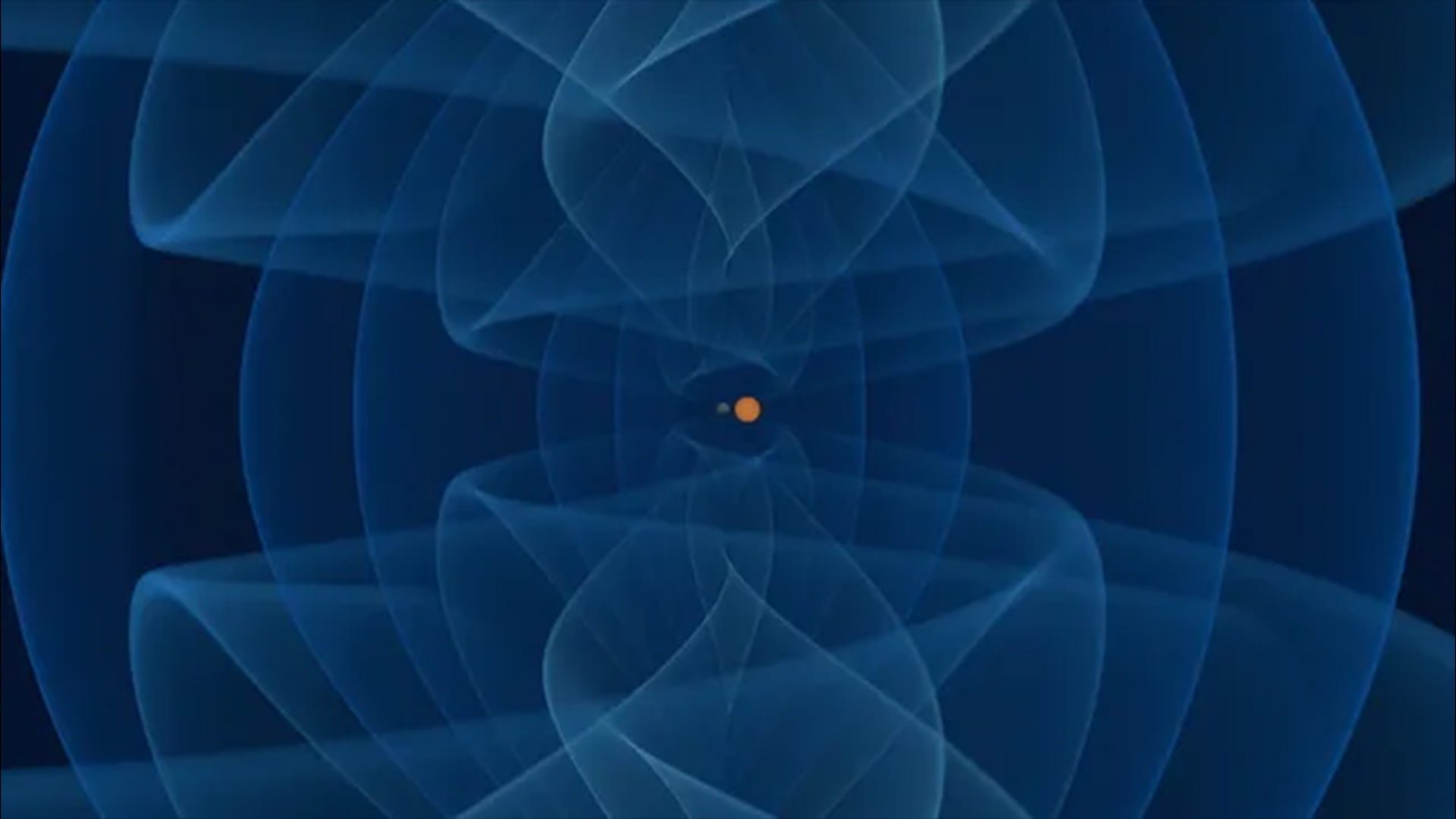Gravitational waves reveal 1st-of-its-kind merger between neutron star and mystery object
Ripples in space-time point to the merger of a neutron star with another mystery object. The object, which falls right within the mass-gap range, sheds light on a long-sought, murky realm.

Astronomers announced on April 5 that they may have detected a collision between a neutron star and a lightweight mystery object — an object larger than the largest known neutron star, but smaller than the smallest known black hole. The finding sheds light on objects that exist in this murky realm, which was long thought to be empty but, in recent times, has revealed otherwise.
More specifically, a signal detected in a pocket of the universe roughly 650 million light-years from Earth indicates a rare merger between a neutron star and what astronomers suspect is a surprisingly lightweight black hole. The pair would have danced around one another and merged about 650 million years ago, generating ripples in the fabric of space and time known as gravitational waves. These waves were sensed and flagged on May 29, 2023 by a network of antennas in Japan, Italy and the U.S. associated with the LIGO-Virgo-KAGRA (LVK) collaboration.
"These are rare events," Evan Goetz, a LIGO researcher at the University of British Columbia (UBC) in Canada, told Space.com. "It's very exciting for the community to study as the first one of its type."
The black hole candidate, which is about 2.5 to 4.5 times heavier than our sun, is heavier than the established limit of 2.5 suns for a neutron star — but lighter than the lightest known black hole, which weighs about five solar masses. This places the newfound object within the "mass gap," a mysterious region that separates the heaviest neutron stars from the lightest black holes.
This discovery "hints at this 'mass gap' being less empty than astronomers previously thought," Michael Zevin, an astrophysicist at the Adler Planetarium, said in a statement.
Related: Uranus and Neptune aren't made of what we thought, new study hints
Black holes, small and big, are born from the violent deaths of immensely massive stars. A few models of how stars evolve, however, predict black holes with masses within the "mass gap" range cannot directly form from such stellar deaths.
Sign up for the Live Science daily newsletter now
Get the world’s most fascinating discoveries delivered straight to your inbox.
"It does appear that it could be possible now with these observations," Goetz said. Perhaps, he says, astronomers need to tweak the models — or maybe "we really do have a more complicated evolution of a heavy neutron star that evolved into a black hole."
"It's hard to know just from this one example," he said.
In early 2020, astronomers announced the first conclusive detection of gravitational waves created by a collision which involved a stellar remnant right in the mass gap range. However, the discovery team couldn't classify the object with conviction at the time, concluding it could be either the biggest known neutron star or the smallest known black hole.
As for the latest finding, astronomers say they cannot pinpoint just where in the sky the mammoth objects merged because only one LVK detector was recording data when the signal was detected. Nevertheless, the finding has raised hopes that there may be many more such mass-gap objects out there waiting to be discovered.
"There is a lot more potentially we could find and a lot more to look forward to," Heather Fong, a LIGO researcher at UBC, told Space.com.
After a short maintenance break, LVK detectors resumed measuring ripples in space-time on April 10. The LIGO team anticipates observing over 200 gravitational wave signals by February 2025, including hints of a few objects within the elusive mass-gap range.
The discovery was presented at the American Physical Society meeting on Friday (April 5) and is awaiting peer review.
Editor's update 4/11: This is the first merger confirmed between a mass-gap object and a neutron star; mergers between black holes and neutron stars have been detected in the past. This article has been updated to reflect that.
Originally posted on Space.com.

Sharmila Kuthunur is a Seattle-based science journalist focusing on astronomy and space exploration. Her work has also appeared in Scientific American, Astronomy and Space.com, among other publications. She has earned a master's degree in journalism from Northeastern University in Boston. Follow her on BlueSky @skuthunur.bsky.social












